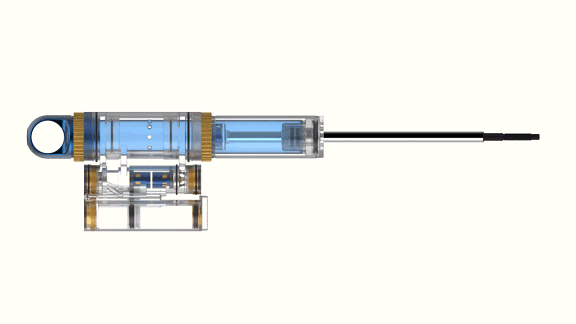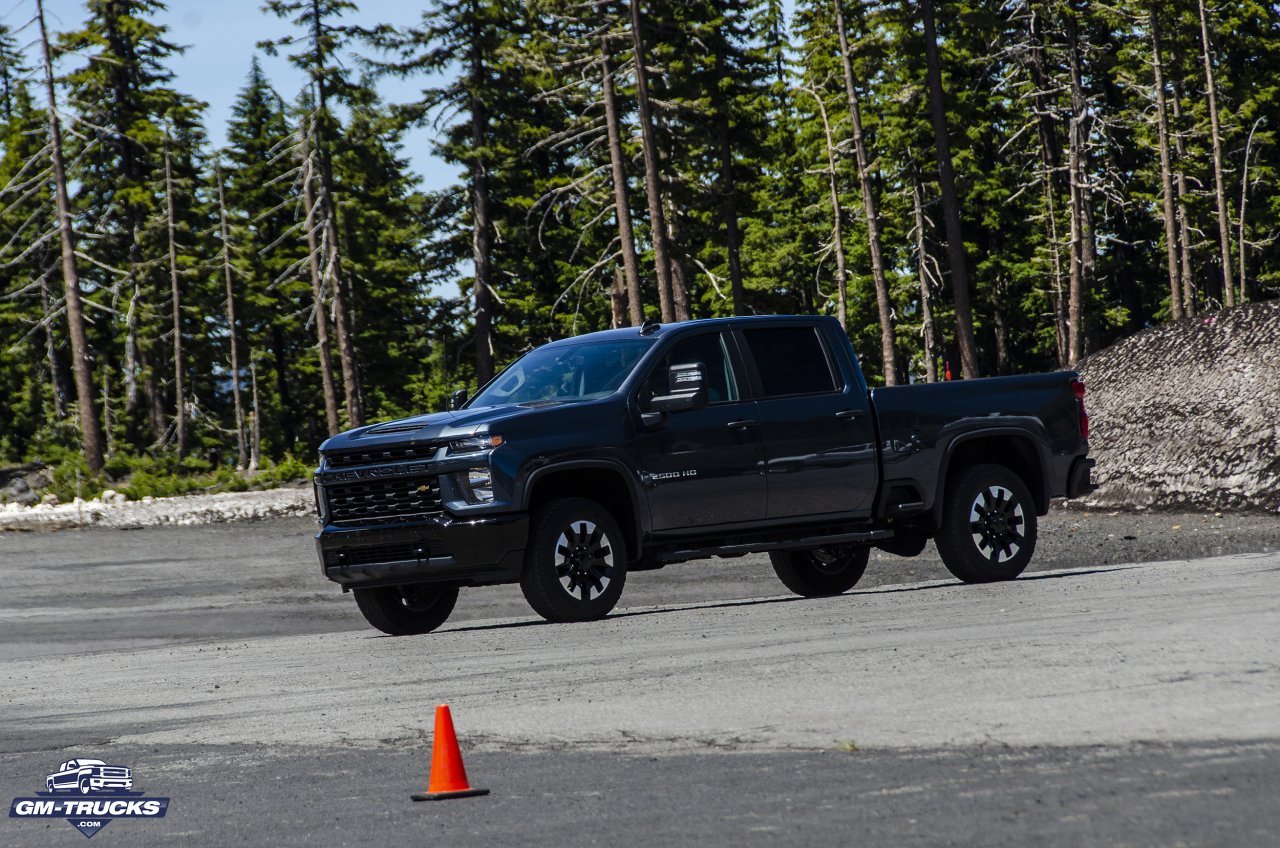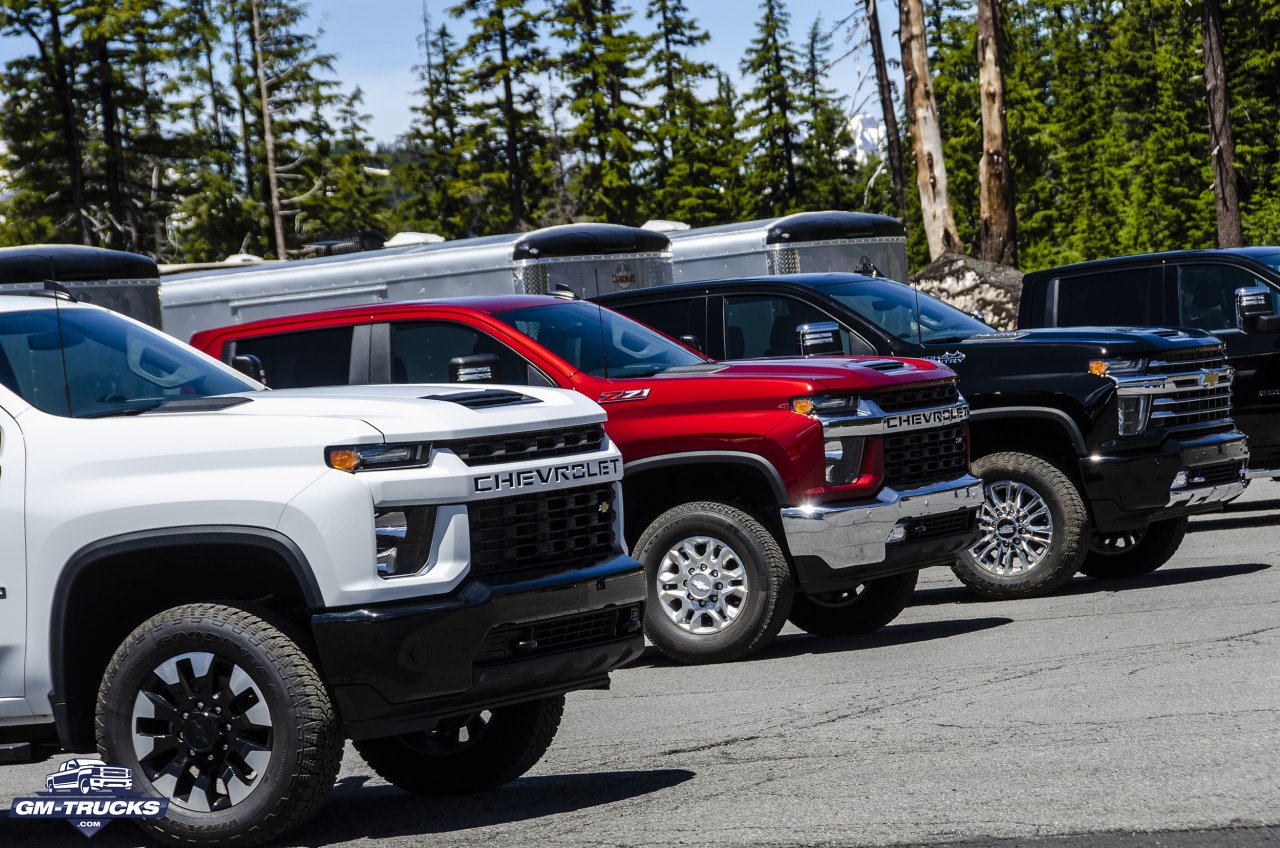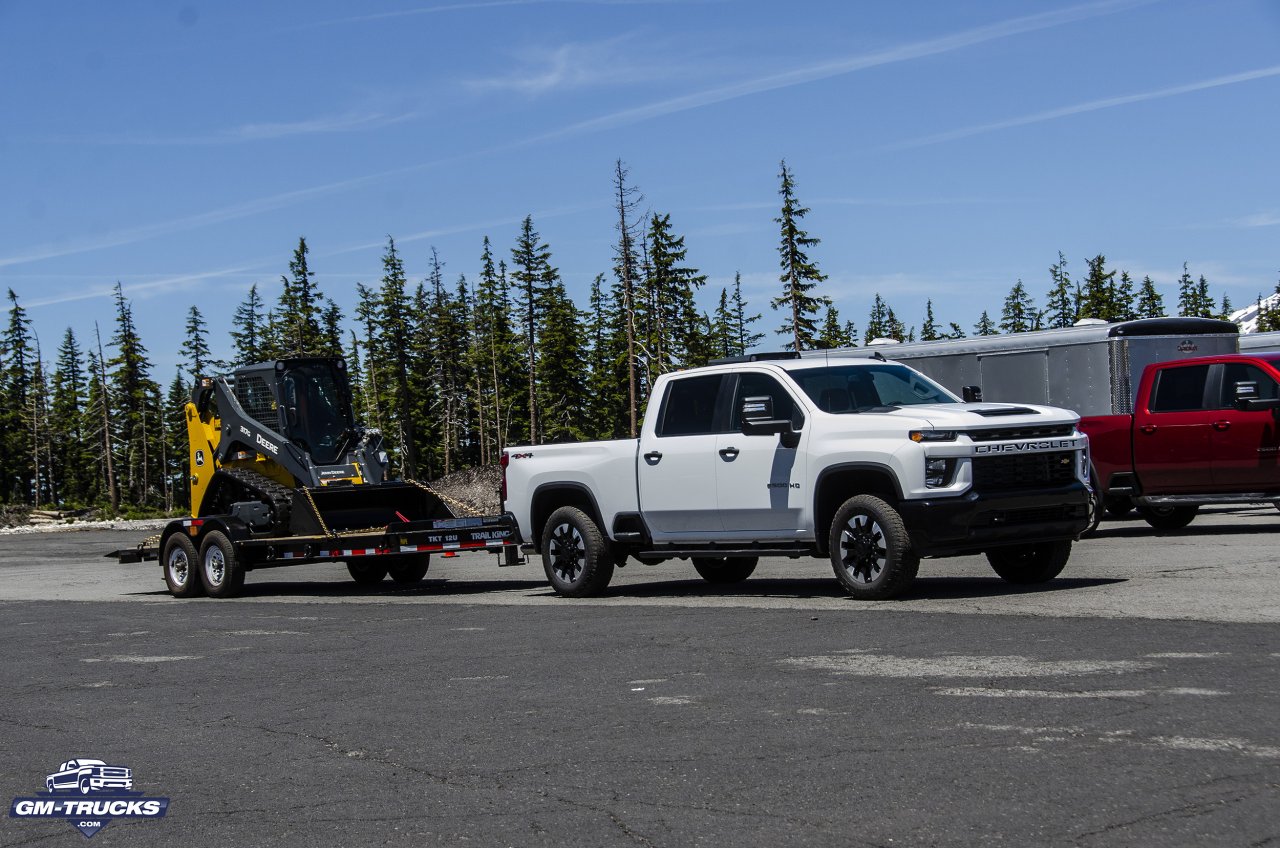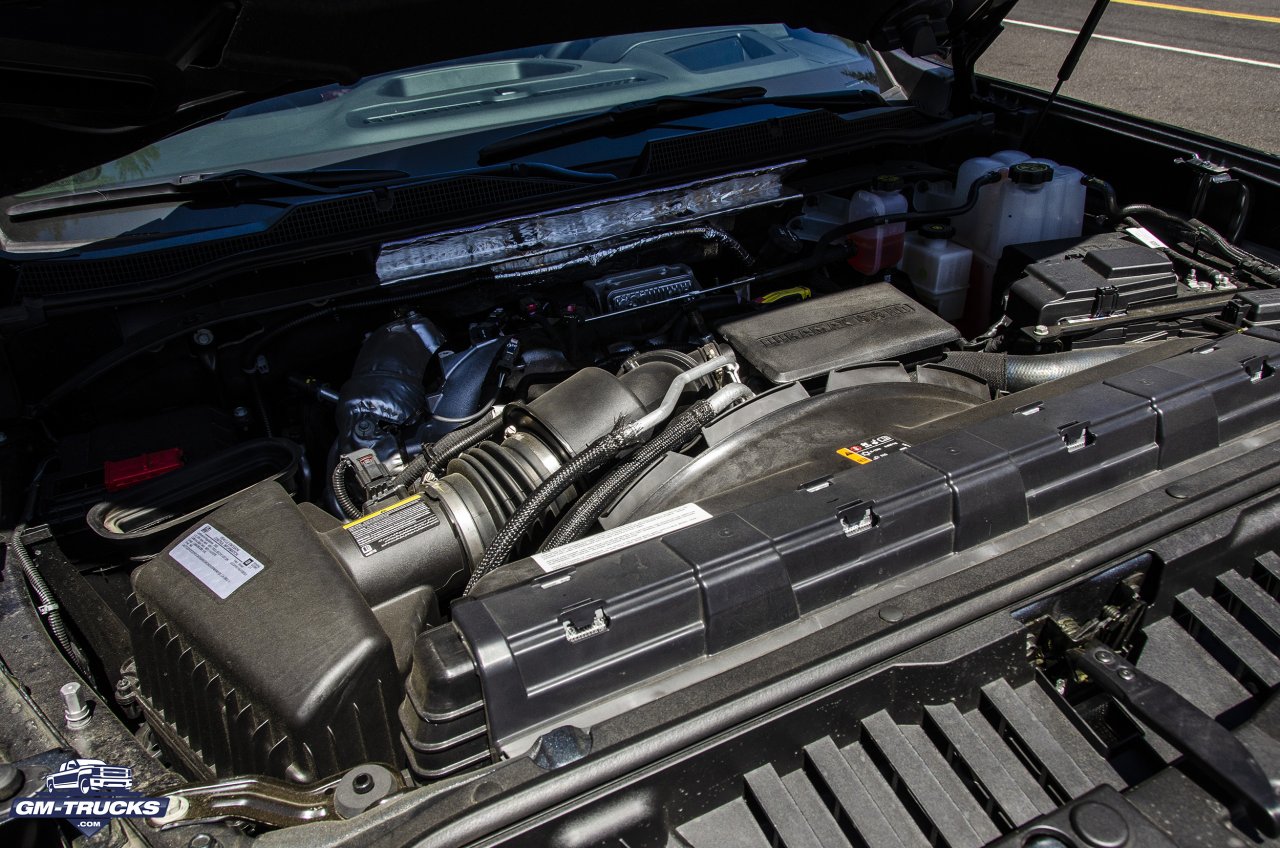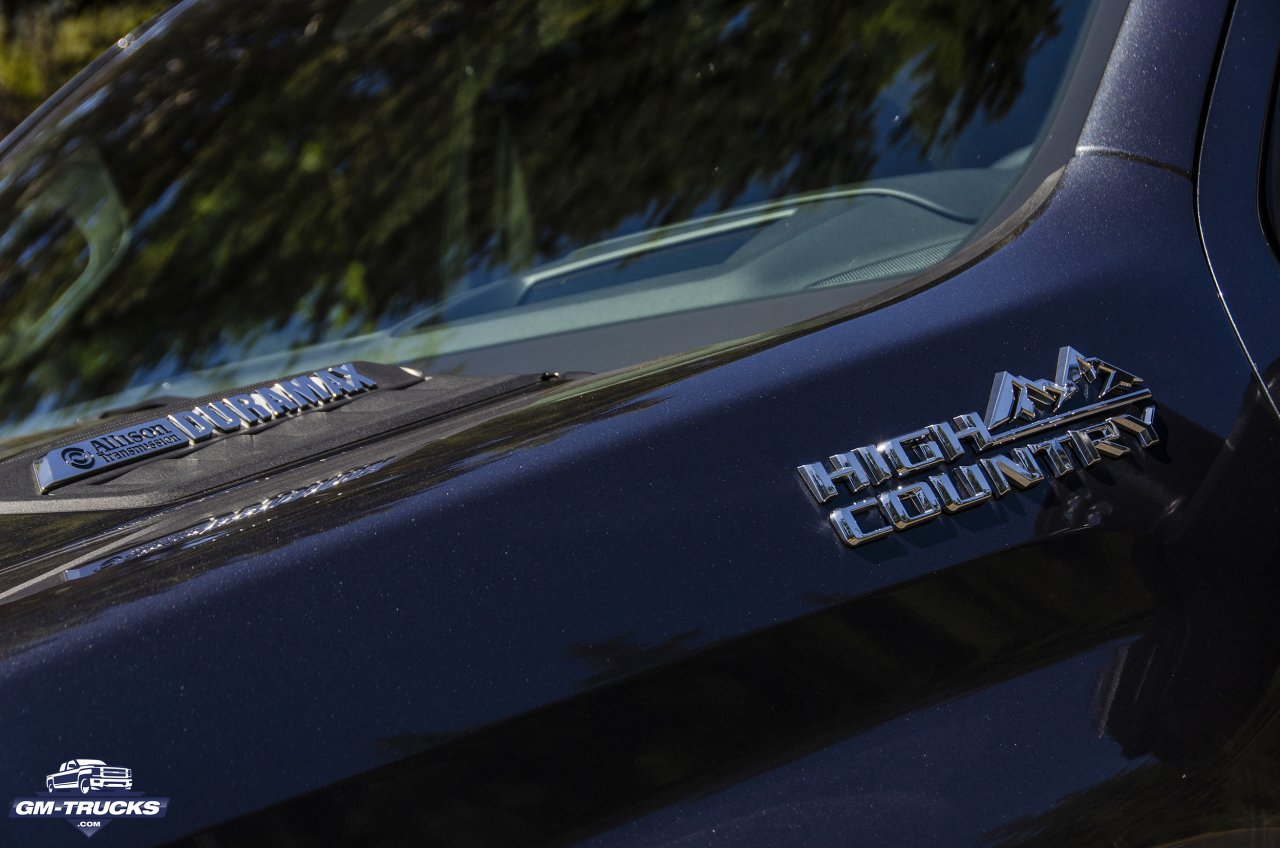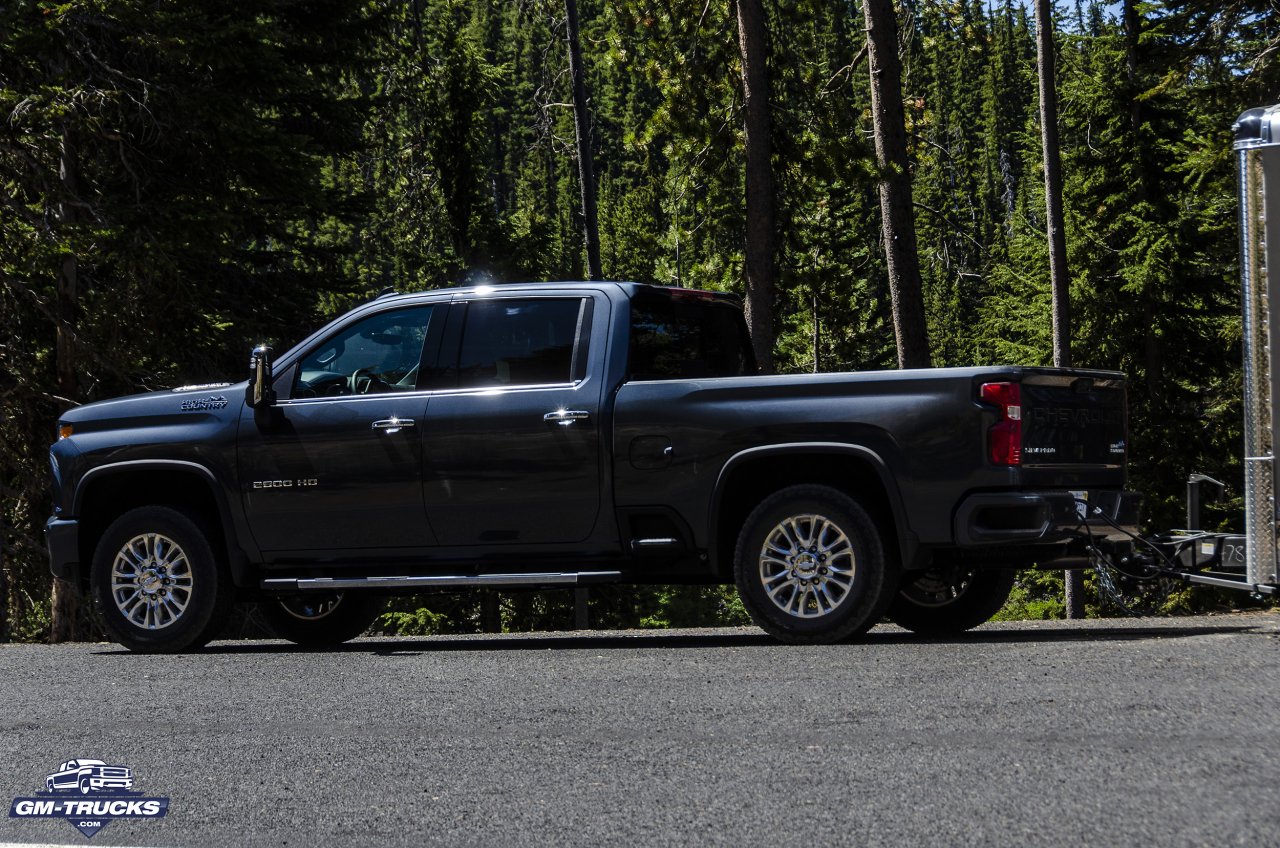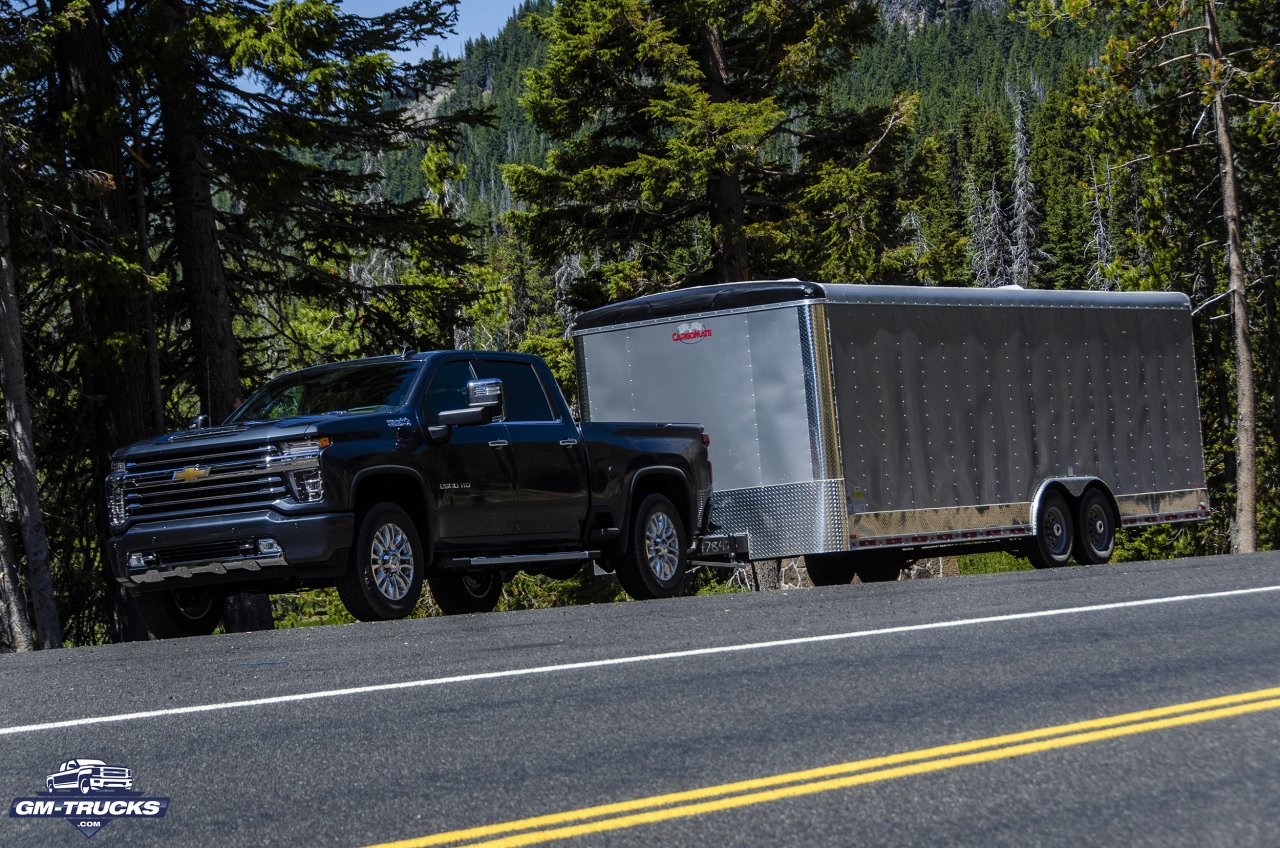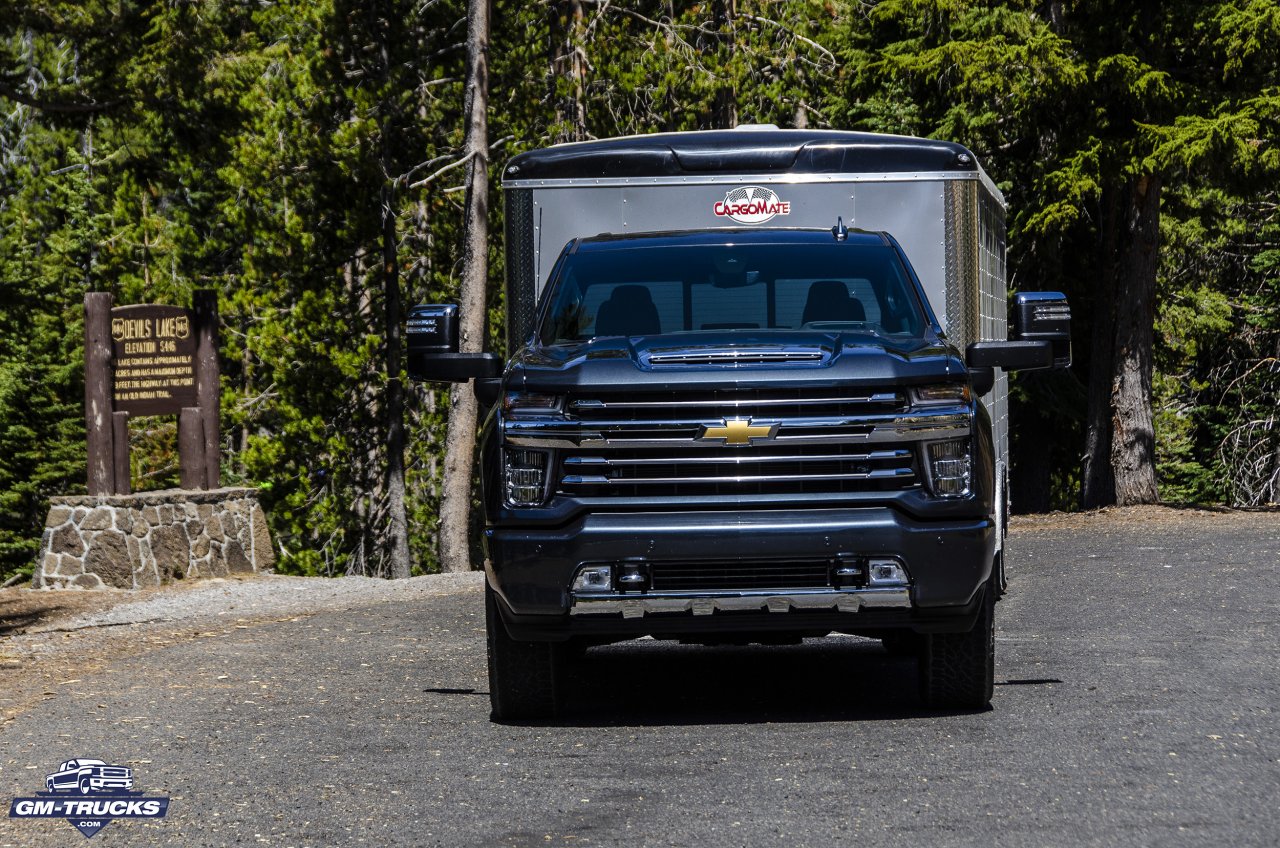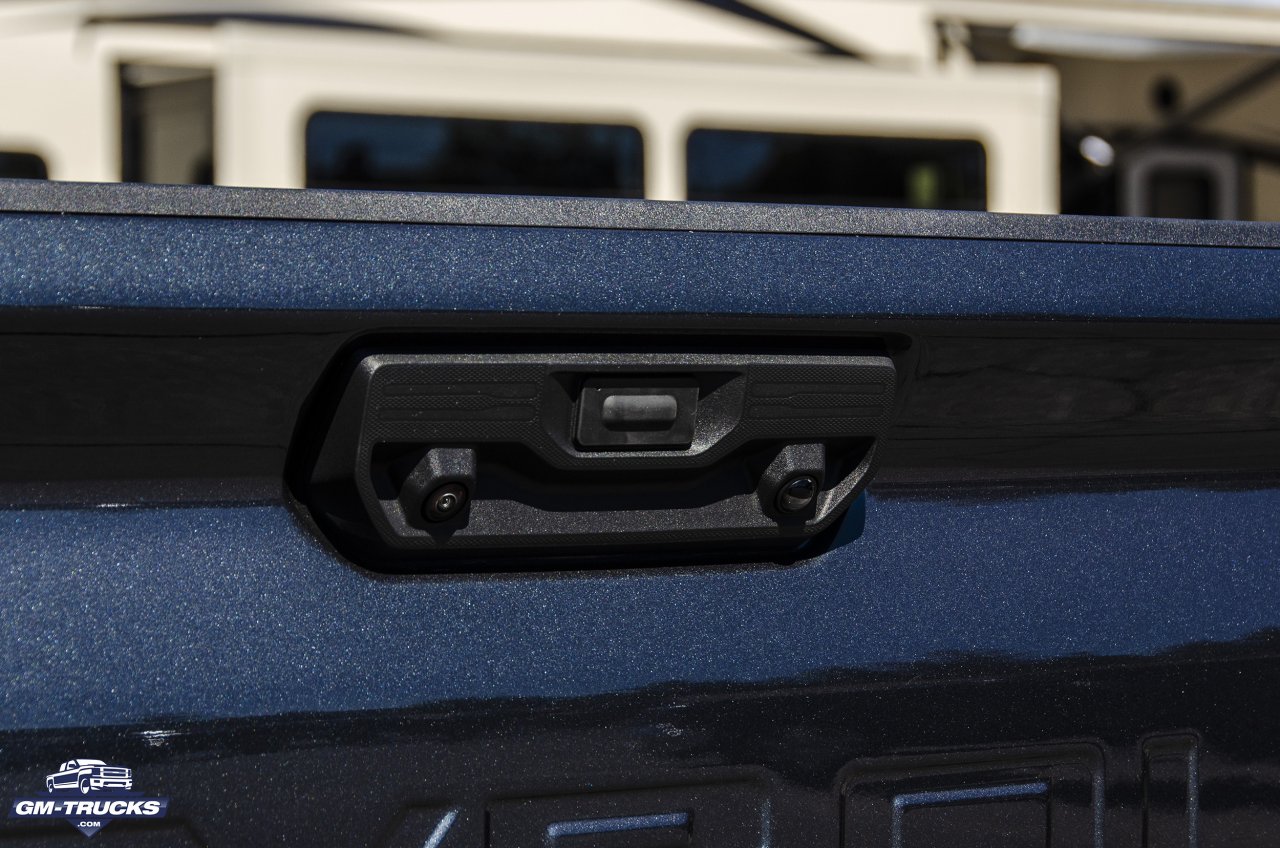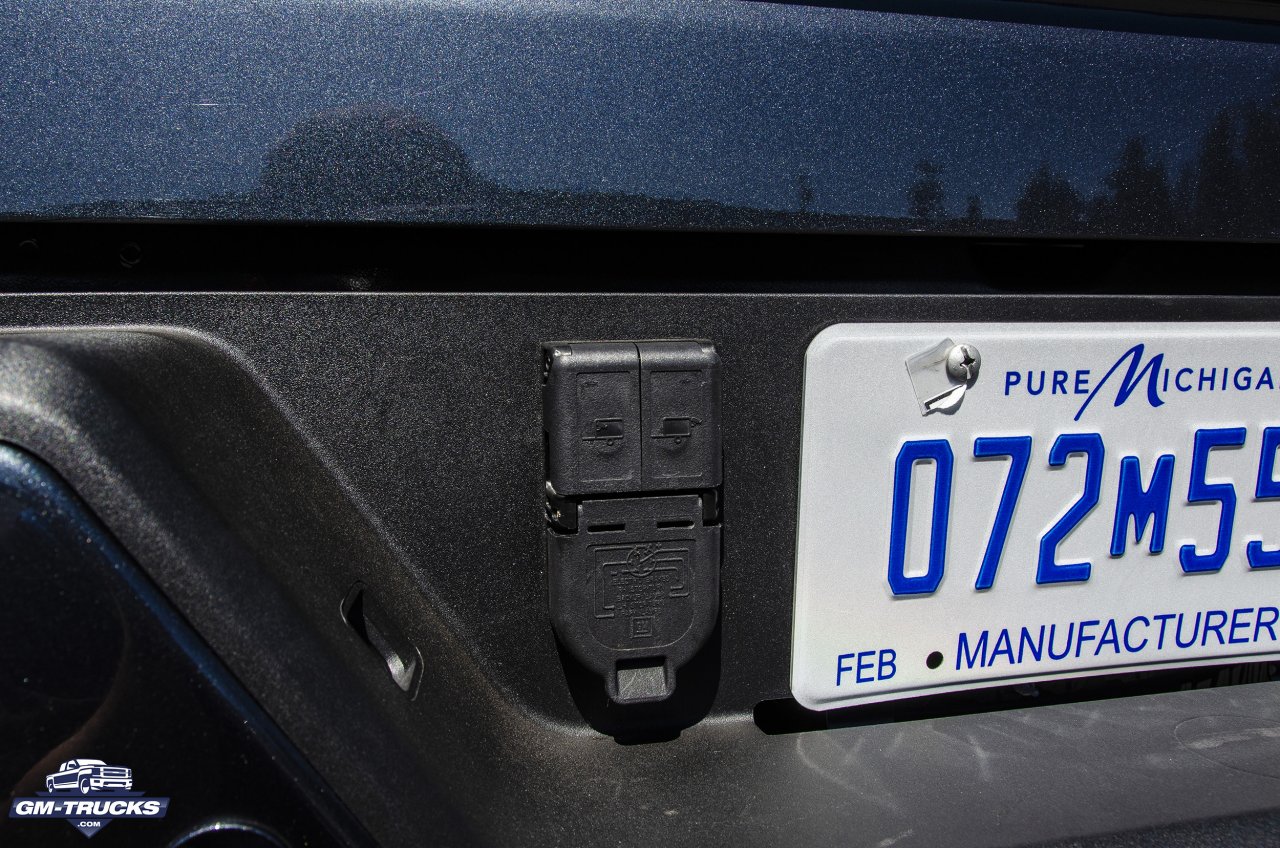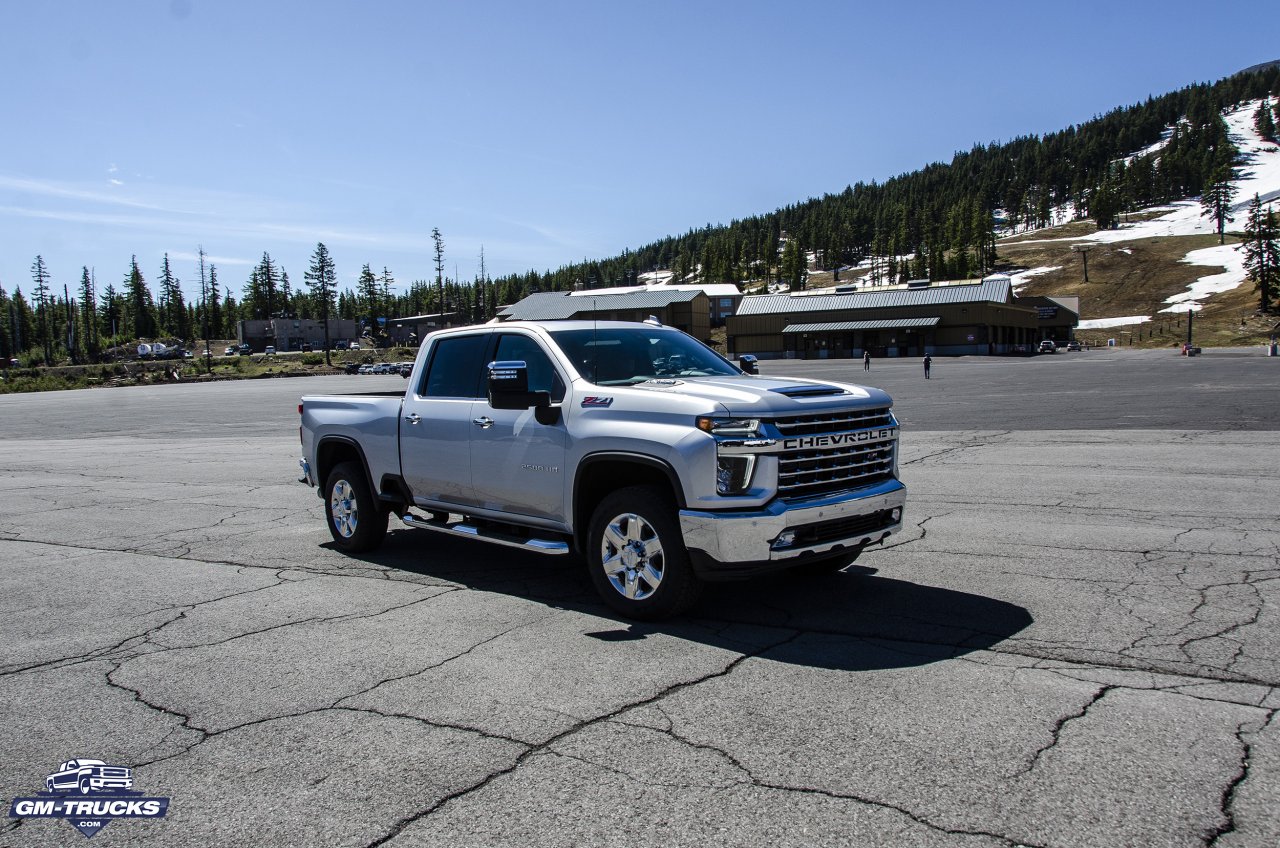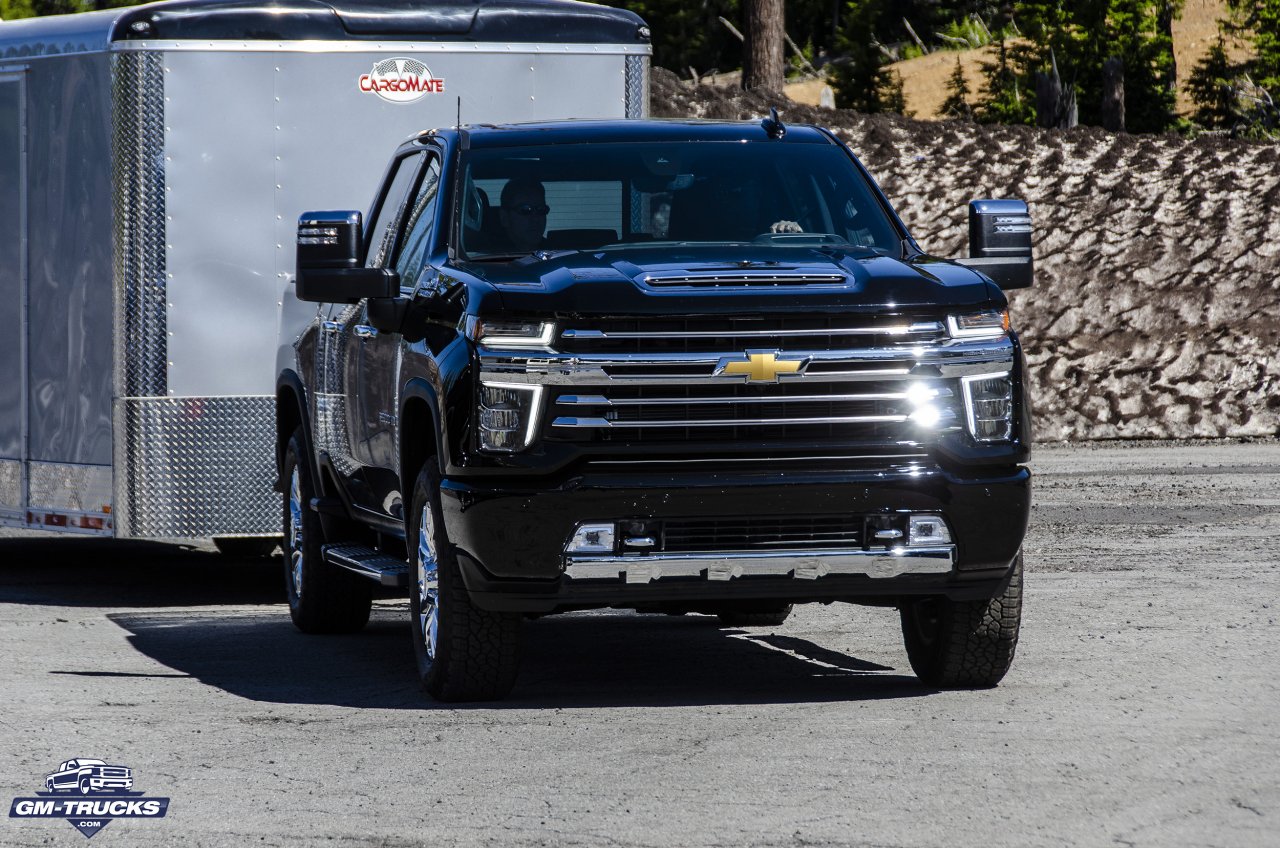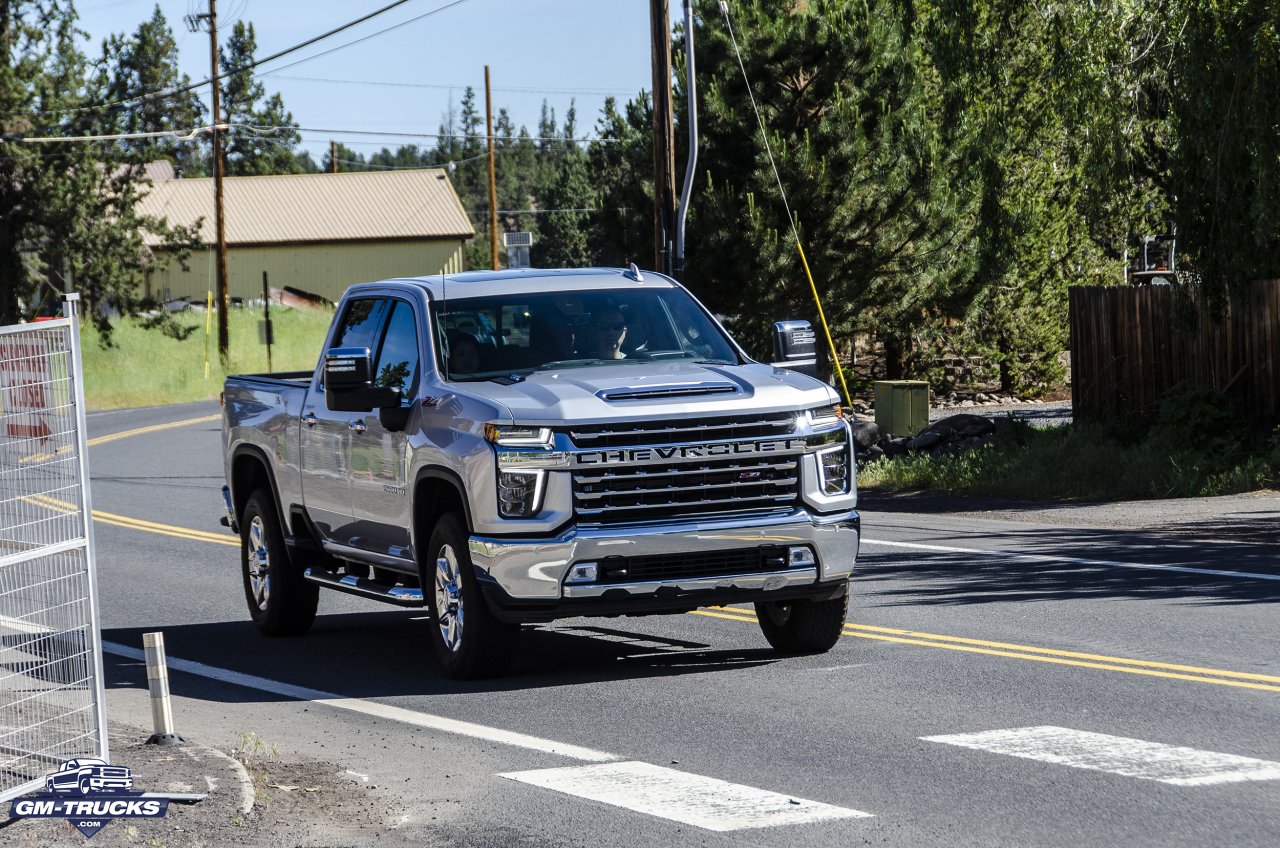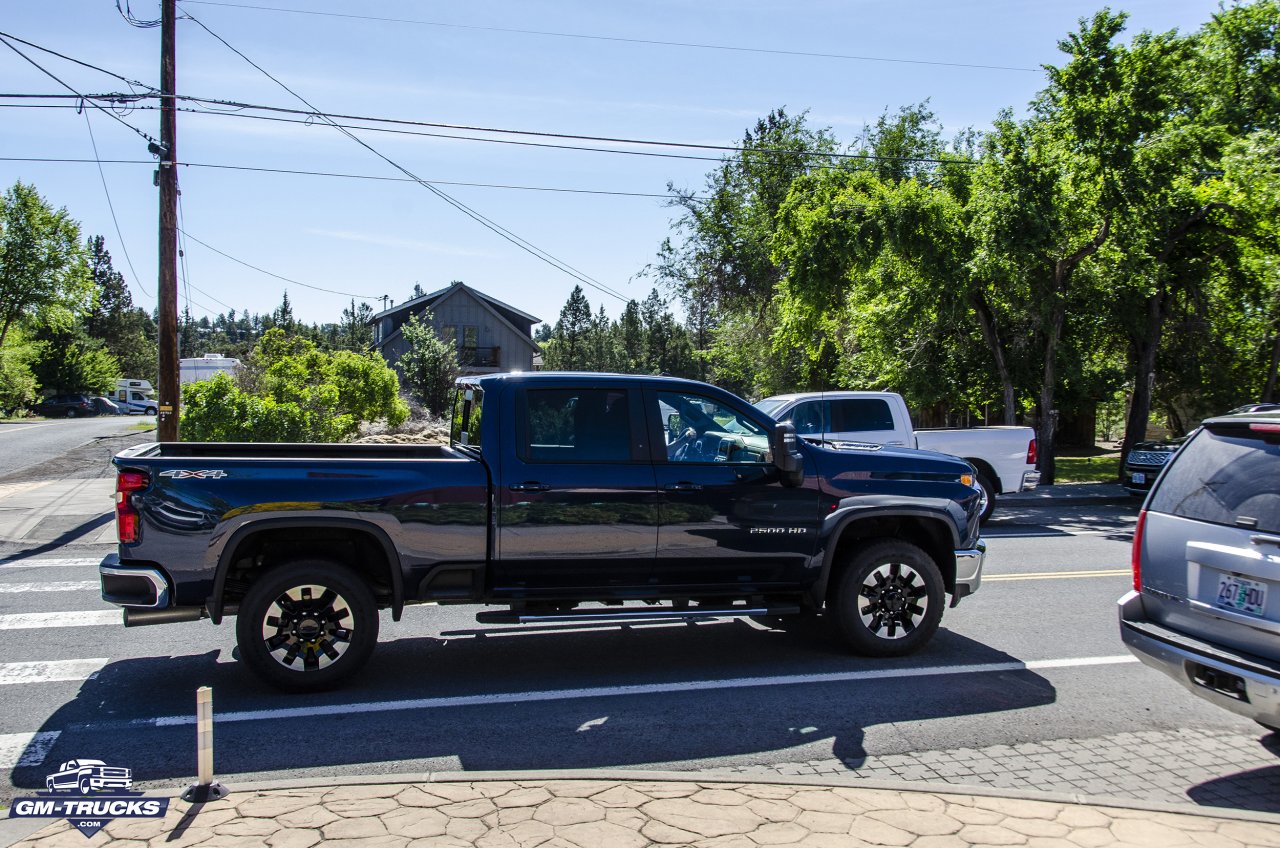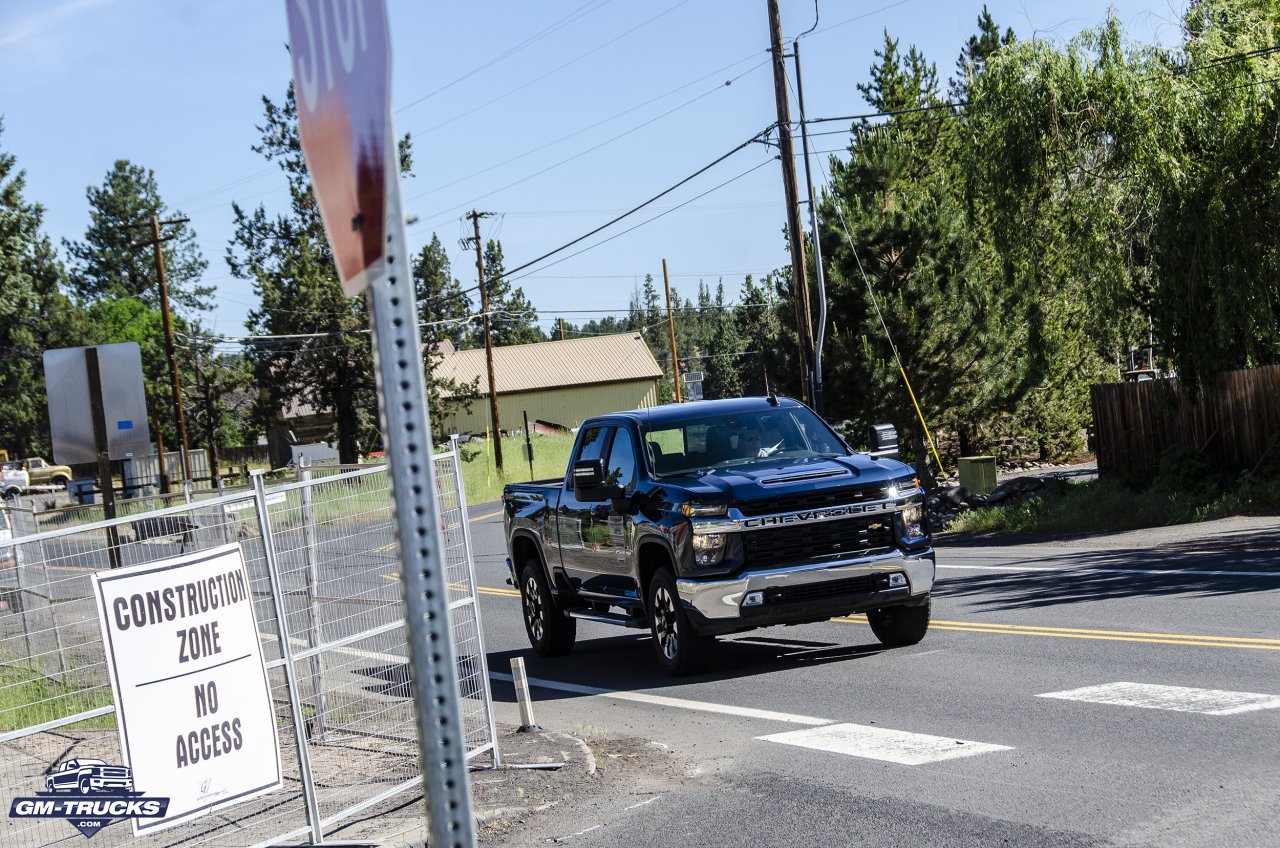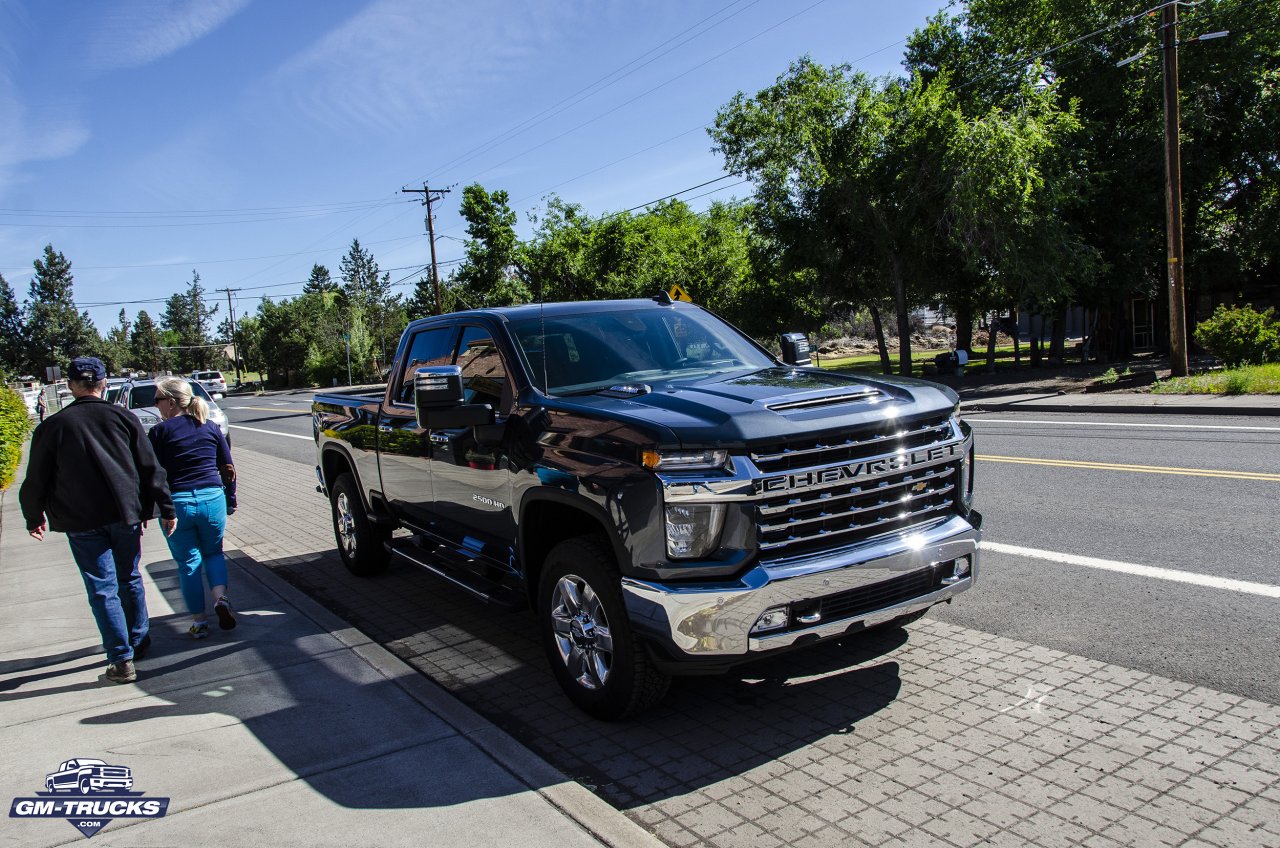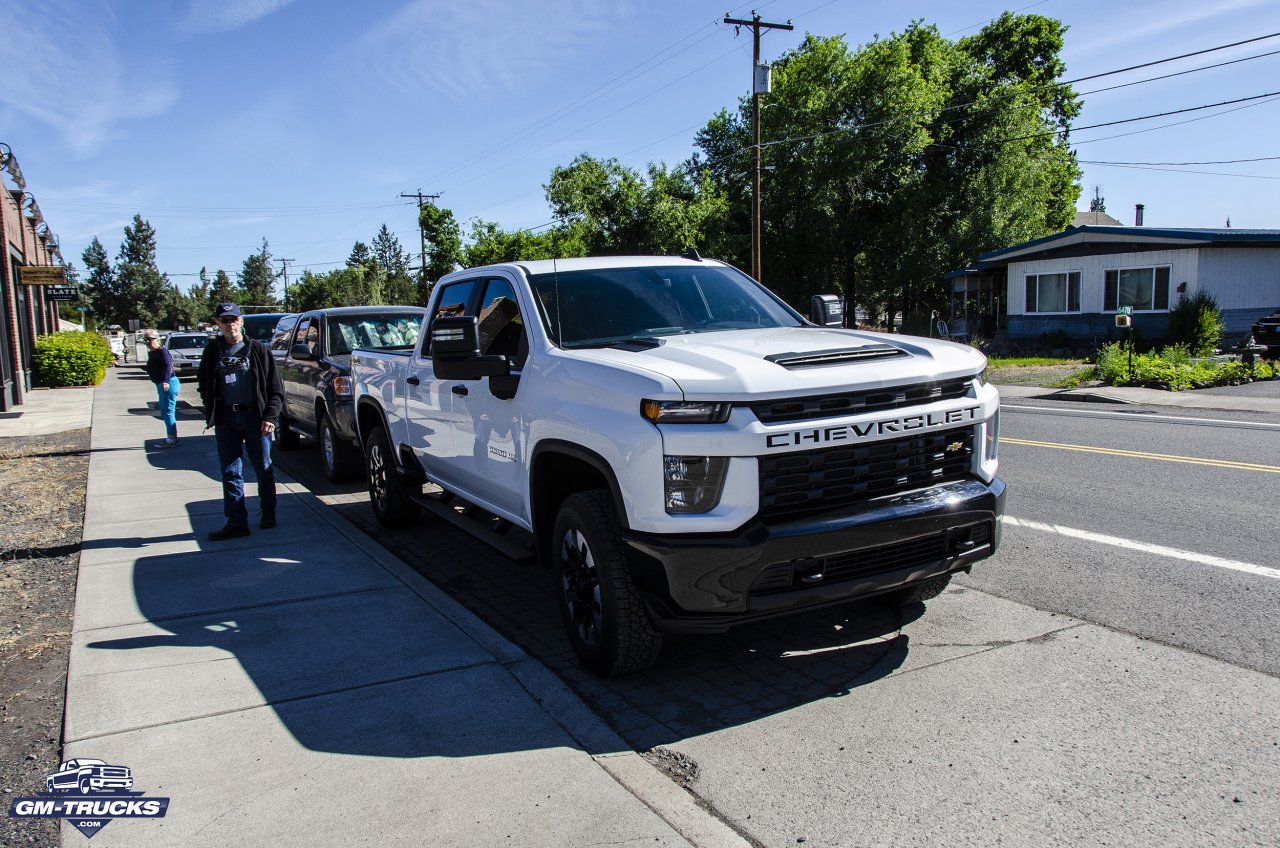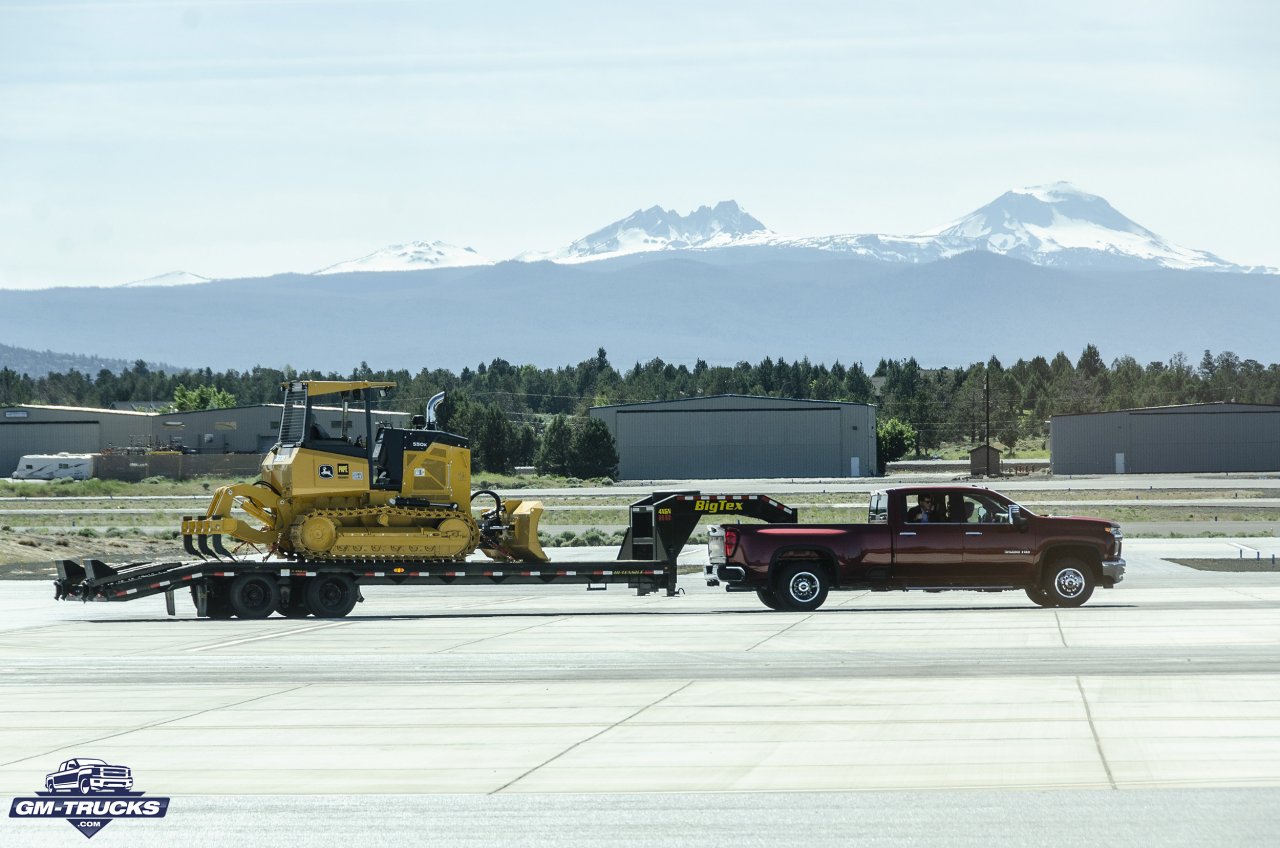Search the Community
Showing results for tags 'first drive'.
-
Zane Merva Executive Editor, GM-Trucks.com 8/13/18 Last week I traveled to Wyoming for an opportunity to drive the 2019 Silverado in a variety of situations, trim levels and engine/transmission combinations. Chevrolet was finally ready to let third party experts behind the wheel and I was ready to take them up on the offer. Things I Liked About The 2019 Silverado Butter smooth engines A smaller, more responsive driving feel Designed for function and usability above all A chassis ready take a beating Things I didn't Like About The 2019 Silverado Unloaded suspension float on bumpy roads Interior is functional but has a drab design Limited availability for 6.2L Enough trim levels to make a customer dizzy If you’ve been following along with all of our 2019 Silverado news for the last year, feel free to jump ahead. If not, or you need a refresher, check out these prior topics to get primed for our impressions. Here's A Photo Of Every New 2019 Chevy Silverado Trim With Features All-New 2019 Silverado Details: New Diesel Engine, Weight Savings, Steel Bed, 8 Trims, More Space Here's Your 2019 Silverado Trim & Engine Availability Matrix Official 2019 5.3L & 6.2L V8 Engine Specs Are Here The 2019 Chevy Silverado Will Come In These 11 Colors And if you’re not aware that we’ve ordered a new 2019 Silverado as a GM-Trucks.com long term review truck….well, sit down and read up on that too. Birth Announcement: Our 2019 Silverado Has Been Built Our 2019 Silverado Is Locked And Loaded At Event Code 3400 Our Long Term 2019 Silverado LTZ Has A Build Week And we've got a 2019 Chevrolet Silverado LTZ Order Number We Ordered A 2019 Silverado Today And You Can Too! After I touched down in Jackson Hole and had a moment to literally catch my breath while acclimating to an elevation of 7,000 ft, Chevrolet gave me some lunch and let me have a look around the new models. On display for my arrival was a brand new LT Trail Boss and High Country, along with a frame/suspension mock-up and a body/materials mock-up. At the forefront of Chevy’s talking points to the media was the thoughtful use of high-strength steel and a “truck for every buyer” trim level strategy. It made sense... if the truck backed it all up on the road. The next morning- the real fun began. After a quick breakfast, I jumped into a white RST with a 5.3L engine and 8-speed transmission. My co-pilot from Hagerty took the wheel first and we traveled up Wyoming Route 22. Driving Impressions 5.3L & 8-Speed Heading up 22, aka The Teton Pass Highway, winding back and forth through the mountains, our RST was rock solid and nimble on its feet. GM has put in significant work to decrease noise and vibration, stiffing the new Silverado far beyond the previous model. That translates into more communicative steering, less heft and weight, and a surprising nimbleness on the road. In fact, Chevy has trimmed back up to 450lbs from the new model Silverado, depending on cab choice. That’s significant noticable behind the wheel. Sporty yet comfortable and without harshness. GM engineers were able to soften the spring rate on the new Silverado because of the lighter curb weight. GM’s 8-speed transmission is also smooth, mostly in part to the new and improved 5.3L engine with Dynamic Fuel Management. The pair works well and provides the new Silverado with a tried and true option for owners who need a V8 but don’t want to support the fuel habits of a 6.2L. How does Dynamic Fuel Management Work? See This Infographic In our mix of mountain roads and long straight prairie flat-lands the 5.3L in our RST switched between 17-different cylinder firing modes in an imperceptible fashion. So while horsepower and fuel economy ratings stay largely the same and the 2019 Silverado 5.3L is rated similarly as the 2018 engine with AFM, the entire package is just a little smoother and quieter in the process. In The Rough With A Trail Boss After a few hours behind the wheel of the RST we arrived at our lunch stop. Chevrolet had set up a few ways for us to explore the new Silverado at this location, so we settled in, grabbed a bite to eat and headed toward the mud. The all new Trail Boss models is a factory warrantied 2-inch suspension lift and appearance package. What really matters is that those extra two inches add a lot of capability to an otherwise capable pickup. Chevrolet had setup a small off-road course for us to try out the Trail Boss on. It included a row of logs to traverse, a ditch to descend into, a hill to climb, rocks to cross, and a mud pit to let loose in. The only rule was there was no rule. “Do anything you want, it won’t break”, said the GM engineer next to me as I slammed the skid plate off a boulder. After a half dozen laps an a true honest effort to not give a crap, I’m inclined to agree. After watching a line of other journalists do their worst right after me, I’m also inclined to think that Chevy has baked one heck of a platform together. Solid and ready for a beating. The best part about the Trail Boss is that you can get it in an affordable Custom Trim or in a more mainstream LT trim. From a basic ranch truck with cloth seats to a leather trimmed LT that can take you out on the town, the Trail Boss is a great option for anyone who wants a Silverado that has more attitude. That said, you can’t get the 6.2L in the Trail Boss. It’s a glaring omission to be sure and one that pushed us to buy an LTZ. But not all hope is lost as the all new 3.0L Duramax will be available in the LT Trail Boss later on this model year. Unfortunately, Chevy didn't have a new 3.0L diesel for us to drive yet. Towing 6,000lbs of Quickcrete with a 5.3L Next up I listened to an overview of Chevy’s new advanced towing system and then took some weight for a spin. The brand has baked in a lot of customer-centric features for those who do a lot of trailering. When equipped, the Silverado can track trailer tire pressure and temperature, find wiring faults, alert you if someone disconnects your trailer via app, and keeps a log of fuel economy per trailer. Customers who opt for the trailering camera package get under mirror and cargo bed views, along with a trailer camera to hook up to their rig. Chevrolet had setup a few Silverado with trailers for me to drive. These enclosed trailers had been filled with 6,000lbs of concrete. I know this because I had to look for myself. And I had to look for myself because pulling that much weight in the new Silverado is just no big deal. Such a non-event I absolutely had to confirm there was anything in the trailer at all. Smooth shifts, no gear hunting, and no feeling of being dragged down with all of that small block torque. Driving Impressions - 6.2L & 10-Speed After having some fun getting dirty with a Trail Boss, comparing every single one of the eight 2019 trim levels, and pulling around some concrete, it was time to head back to the ranch. Our ride for the afternoon was a 6.2L LTZ with a 10-speed transmission. At idle, the 5.3L and 6.2L share no difference in vibration or exhaust note. Only when you step on the accelerator does the difference become apparent. Very apparent. Rated at 420-horsepower, the 6.2L is 65-horsepower more stout than the 5.3L. Just like the 5.3L, its rating from the previous generation has not changed. Horsepower and fuel economy are basically the same. Where things really get interesting is with Chevy’s new 10-speed automatic transmission. This new transmission option is clearly a cut above the 8-speed, offering a nearly imperceivable shift and 10 gear ratios ready for anything. Even cruising a mile above sea-level the larger engine simply digs in and provides endless torque at throttle. No downshifts and no delays. This just might be the best engine and transmission combination from General Motors we’ve ever driven. Final “First” Thoughts With just one whirl-wind day behind the wheel, it was hard to experience everything that makes the 2019 Silverado better than its predecessor. The list is just too long. However, the first impression was clear. Chevrolet has used the opportunity of a clean slate to design the most practical, customer oriented, feature rich truck possible. Not flashy, not gimmicky, and not for the short term. While I came away with an overwhelmingly positive impression and incredibly excited for our LTZ to arrive, it’s hard to overlook a few negatives. Mainly, prices of the 2019 Silverado are the highest ever. A fully loaded High Country will get darn near close to $70k. Also, it’s hard to overlook a lack of increased horsepower or fuel economy over the previous model. We’re also pretty jealous of the 2019 Ram’s 12-inch touch screen display. But with all weights factored in, it’s still clear that Chevrolet is bringing to market the most useful truck ever. No discussion. Ford and Ram are going to eat it in 2019. This is just the beginning of our time with the 2019 Silverado! Stay tuned for the full ownership experience as we take delivery of our Northsky Blue Metallic Crew Cab in a few weeks. See Our Full 2019 Silverado First Drive Photo Gallery
- 83 replies
-
- 1
-

-
- review
- 2019 chevy silverado first drive
- (and 7 more)
-
Thom Cannel: Article & Photos Zane Merva: Photos & Video GM-Trucks.com June 25th, 2019 By now you prospective 2020 Chevrolet Heavy Duty owners are over the Ho-Hum of our 2020 Silverado 3.0-liter story (we are totally Ho-Ho-Ho and Hmmm, can’t wait for a longer test!) and looking at the Alpha Dog, the 35,500-pound tow-rated Silverado Heavy Duty and its over 50 industry firsts including an updated diesel engine and all-new 6.6-liter gas engine. Let’s get to it. Where to start? With its amazing trailer towing features that include 15-view camera and ability to memorize the features of five different trailers? How about the Durabed with its class-leading cargo volume and all-steel construction with a plethora of cargo tie-downs? Maybe you’re gobsmacked by the corner and bed steps with, now, plenty of toe room and 500-pound weigh-holding capacity? Is it the power tailgate that remotely lifts or lowers? An ability to hold first gear while towing maximum weight? Or, is it all of these? Chevrolet states that Heavy Duty trucks are working vehicles, whether towing a gooseneck horse trailer or flatbed and whether gas or diesel-powered. They further tell us that, compared to light duty trucks where 84-percent are retail and 12-percent go to fleets, Heavy Duty buyers are 70-percent retail and 30-percent fleet. Further, Work Truck and Custom trucks make up the volume; LTZ and High Country capture an even larger share of the market for personal and dual use buyers, with mid-trim LT trucks straddling fleet and personal use. Hence the five available trim levels to suit the needs of every buyer. There is no mistaking that the 2500HD and 3500HD is kin to the 1500, yet only roof sheet metal is common. Everything about the new HD trucks was designed to be functional from larger grille to lower side-height bed, to improved box and bed steps. It’s massively bold with strong character lines, huge fender wells and functional hood scoop. Both the 2500HD and 3500HD are distinctive and clearly Chevrolet. For 2020, every frame is boxed and steel, there’s a model with built-in gooseneck cross-body reinforcements and bed holes, 4X4 models can option Autotrac two-speed electronic transfer case, the DEF tank is relocated inside the frame rails with the filler under the fuel door, plus a 10-segment DEF gauge measures content. A statistic to toss off at your microbrewery; within the total HD segment, 54-percent are Crew Cab diesels while within fleets, 62-percent are gas-powered, with 34-percent of fleets buying Crew Cabs and diesel power. And if you’re wondering where the 2020 Silverado HD you’d like to scope out on your dealer’s lot is hiding, Crew Cabs began delivery last week with Regular Cab, Double Cab and Duallies hitting the streets this fall. Restrain yourselves. Let’s now talk about the biggest reasons for owning a Heavy Duty Chevrolet (or GMC). It’s towing. And if you’ve noticed comments to our 15-camera article, there’s some passion about technology. Realistically, as many HD trucks are sold to new truck owners towing large RVs, anything that improves road safety is flat wonderful. If you further read Chevy’s research that says 12-percent of pickup drivers have gotten into a fight with their significant other over trailer hookup, you’ll understand executive chief engineer Tim Herrick’s comment that “We save marriages.” Having driven every truck segment from light duty to tractor-trailers we feel you. So, when research says a majority of drivers are stressed by towing, please offer them a 2020 Silverado sales brochure and a tissue (and save a tissue for yourselves ‘cause you might be exaggerating your tow-cool). So let’s dive deeper into the subject. Everyone has a hitch camera these days, with overlaid guidelines to put you within a few inches, front-to-back, of the ball. Chevy goes further with a selectable view that looks own over the ball. Even those who haven’t set a hitch in years—or never—can get within a quarter-inch of perfect. And an APB or automatic parking brake engages automatically so that when you lift off the brake pedal you don’t roll off the ball. Sticking with the non-pros and semi-pro haulers, there’s a checklist for your trailer, the ability to check the lights after connecting the trailer’s electrical system, a tow-haul reminder and VIN-specific labels for the trailer itself. If you option the smart trailer integration, which is designed to work with ASA Electronics iN∙Command® control system, you have control over trailer features like heat and air conditioning through the infotainment system or the myChevrolet mobile app. And nobody should turn down the ability to monitor trailer tire pressure and temperature. Blowouts are never convenient and most often low-pressure and highly temperature related, according to Michelin Tire Company. We found the 15-view system difficult to get used to during the first five minutes, particularly when backing; our mirror habits are embedded. Yet, simulating tight turns where we could see along both the tight and far side, pulling forward into a tight box, or backing (after a few tries), we really came to appreciate what the system could do. Then, on the highway with an 18,000-pound box trailer behind us, mirrors just didn’t cut it compared to the high-tech camera system. We were driving on twisting two-lane blacktop in mountain foothills. Using the entire camera tech set, particularly the ability to look out the back of the trailer, we could easily pick places to pull aside to let faster cars pass us. It took less than an hour to become a must-have feature. Later we towed a smaller skid-steer on a flatbed without the system and truly missed it despite using our slide-out mirrors fully extended. This naturally leads to the two engines offered in the 2020 Heavy Duty, first the 6.6-liter V-8 purpose-built gas engine that delivers 22-percent more torque than its predecessor. Now it delivers 401 horsepower and 464 lb-ft of torque. It’s mated to a six-speed automatic transmission. The 6.6L isn’t a just a 6-mm stroked 6.0L, rather it takes advantage of the Gen5 small block architecture and has a unique cast iron block with forged powdered-metal connecting rods and forged crankshaft. The most significant change is the addition of Direct Injection. It’s all new, an industry first for the heavy-duty market and new to GM trucks. Direct Injection allows a compression ratio of 10.8:1 Quoting Mike Kociba, a GM engineer and part of the Small Block team, “Our suite of changes allows us to hit class-leading gasoline engine torque, at 464 foot-pounds at a lower engine speed than the outgoing six-liter was optimized for. I'm proud of its 401 horsepower, which is SAE Certified; no games, it’s legitimate. Customers can have confidence they're going to tow whatever trailer they need.” Don’t forget the larger cooling fan and newly designed water pump. The pump drives the fan through a one-inch shaft with unique bearing design to handle greatly increased thrust loads. Plus, the oil pump is now has variable output, so there’s less parasitic losses. The 6.6L engine features an aluminum oil pan, nylon 6-6 air intake, and stainless steel exhaust manifolds unique for the Heavy Duty market. Like related light duty Gen 5 motors, this motor has variable dual-equal valve actuation, massive Gen5 valves and uses an actuator that’s mounted to the front cover to control intake and exhaust valves. The new block features inter-bore cooling, that is, coolant flows through Siamesed bores, notably in the upper bores where there’s a tendency to generate higher temperatures. “Small engines with turbochargers allow them peak torque off idle,” Mike told us, “but for heavy duty we don't want that complexity. For the Heavy Duty segment we (General Motors) have durability requirements—Global Engine Durability—that are unique stringent. We know our customers and why we focus on durability. If they can't use their truck today, they might not get paid.” When towing a heavy load, we loved the diesel’s engine braking capability. What about the gas engine? In Tow-Haul, up-speeds caused by downhill driving—together with intelligence based on throttle position—the powertrain produced seamless downshifts. It’s not quite the same as engine braking, but the trailer was “only” 12,000 pounds. Regardless, it was a comforting addition to stress-free towing. The six-speed transmission used for 2020 Heavy Duty GM trucks is an updated 6L90 with an uprated torque converter and clutch pack. According to GM engineer Rich Mardeusz those changes were simple. When it came to the torque converter, things changed. “We looked at the components from a heavy-duty diesel torque converter and a high-output gas torque converter and then took the torque-carrying components from the diesel and married them to the spring and damping components from the gasoline torque converter. That’s what was needed to accommodate the approximate 22 percent across-the-board torque increase.” Those changes also damp out firing frequencies from the gasoline V-8 engine, making the powertrain smoother. Since a majority of buyers opt for the diesel engine, let’s look at that. Also displacing 6.6-liters, the Duramax turbo-diesel makes 445 horsepower and 910 lb-ft of torque. It’s coupled to a 10-speed Allison transmission. There were minimal changes to the engine for 2020. They include a 28-inch fan for cooling; upgraded oil cooler—now 19 plates instead of 14 and the cylinder head gasket was improved. Engine brake capacity is greater by 14-percent and while there’s a button for manual activation, while in Tow-Haul mode engine braking is automatically activated at certain RPMs. It’s Chevrolet keeping you safe. Thus, under the new control system the powertrain will recognize any need for the engine brake and activate automatically. For instance in driving down hill and forgetting to shift, the higher RPM means automatic activation. We did experience this with the18,000 pound box trailer and it is amazingly transparent and surprisingly quiet. You don’t have to downshift on modest hills, as the system will totally keep you at, or near your desired speed. Of course you may have to use a bit of smooth brake application if the grade is longer, or steeper. For really steep downhilling Plus-Minus buttons on the column-mounted shifter initiate gear changes. We’re not huge fans of the buttons as the steering wheel obscures their location and make it a bit fumbly to slide your thumb into position. A really important feature for 2020, diesel models add an engine after-run feature. Should you tow up a grade and park for dinner without a cool-down, the truck will do it for you. Run time is limited by temperature and shutdown is equally automatic. Because of the Allison/GM 10-speed transmission used for 2020, the powertrain required a complete recalibration. There are several positive results, according to David Ames, GM assistant chief engineer and Allison liaison. “Emissions have been improved and fine-tuned to maintain the best efficiency the transmission can offer to our customers.” It also has a fully warranted chain-driven engine-speed PTO available from the factory. The new 10-speed’s torque converter has a lock-up clutch that is unique as it will lock up in first gear, even under max loads. So, if you're pulling 35,500 pounds, you can do a first gear launch and lock up right away, which helps get rid of heat. We asked David why this is important. “Normally in first gear you're under high torque and generating a lot of heat, which puts a lot of demand on the cooling system. Locking up gets rid of that heat. Also, the new transmission has a lower 4.5:1 first gear with four planetary gear sets and six clutches. We noticed the low gear and ten speeds on launches and while pulling the box trailer on the highway. Often in hilly driving you're downshifting to save brakes; with ten gears we held the right speed and best RPM, particularly with automatic engine braking. We did drive a Silverado 3500HD dually at max capacity; 35,500 pounds on a closed course: our US Army CDL permit has lapsed. The claim of off-the-line torque is spot on. What was most interesting was the 3500’s ability to resist being pushed about on turns and we did several random serpentine loops to see if we could find any significant push? Nope. Later, with “only” 17,000 pounds behind us we finally found a bit of trailer push, which required a deeply rutted dirt road and an off camber turn. Nothing the truck couldn’t handle, even with a journalist behind the wheel. Many of us wondered why the different transmissions for Heavy Duty trucks, why not just the Allison ten? We asked and, while suspecting that plant capacity utilization and raw costs have something to do with it, were told by Vincenzo Verino, the 3.0L Duramax global chief engineer “It’s really about what the transmission brings to the engine itself. With a wider torque band, the gas engine is well-matched to a six-speed, while the narrower torque band of the Duramax is better suited to a 10-speed.” In the battle for Heavy Duty supremacy, big numbers are thrown around to convince potential buyers of worth and value. We found these slides from Chevrolet’s presentation compelling, showing Chevrolet doesn’t always have the biggest power numbers, yet can deliver more real world competency than competitors. Faster to 60 with better towing capability, we’ll take that over a bigger number any day. And Chevrolet says every diesel dually will tow more than 30,000 pounds the 2500HD with 6.6L gas engine has a tow capacity of 17,400 pounds, up 18-percent, that’s good regardless altitude. There is much, much more to tell in future stories, like the no-cut removable fascia for winter snow plow installation and the covered fender-mounted engine heater outlet, use reports of the up-down power tailgate and the bed’s 12 fixed and 9 moveable tie-downs. There’s details on improved axles, locking rear differential, beefed-up prop shaft and 12-inch ring gear, stronger U-joints, class-exclusive SLA front suspension (“mandating a solid front axle for HD trucks isn’t a thing” according to the chief engineer Tim Herrick) and the list goes on. We expect to write several more stories about the new trucks, each specific to how you’d use the truck and with even more details. We have only scratched the surface.
- 12 replies
-
- 2020
- 2020 chevrolet silverado hd
- (and 19 more)
-
Thom Cannell Contributing Writer, GM-Trucks.com December 6, 2018 Last month Chevrolet invited us to test the Chevrolet Bison, a ZR2 derivative with distinctive upgrades that add to its already solid off road capabilities. Built off the already-capable Z7R2, American Expedition Vehicles (AEV) provided the collaborative additions that created Bison. It retains the class-exclusive front and rear locking differentials from ZR2, and high-zoot Multimatic DSSV dampers. The design of the Dynamic Suspensions Spool Valve dampers uses hollow cylindrical sleeves instead of familiar discs. These were used first on race cars including Champ cars, LeMans prototypes and F1 They provide superb off road damping, particularly on rough trails where they offer greater passenger comfort. Getting to the grit of it, a pickup is hard-pressed to have the approach angle of a Jeep, and impossible for a production bed to provide a really short departure. Nonetheless, Bison does a very good job of going over rocks. One of the AEV additions is a set of five hot-stamped Boron-steel skid plates to protect the oil pan, fuel tank, transfer case and front and rear locking differentials, which we tested extensively. “As this is the first Chevrolet vehicle we’ve given the AEV treatment to,” said Dave Harriton, founder and president of AEV, “we wanted to do something special with the industry’s first use of hot-stamped Boron steel.” We think he’s referring to the off-road industry, as hot stamped High Strength Steel is the basis for modern crash-worthy chassis. However, those skid plates kept the rocks out of our oil pan. Some of the Bison upgrades are more cosmetic than necessary, like replacing the bowtie grille a free-flowing CHEVROLET front grille, Bison decals on the bedsides and an AEV Bison logo on the tailgate plus an embroidered AEV on the floor liners and front head rests. Branding, eh? Performance-oriented changes include the stamped steel front and rear bumpers. The front bumper allows adding a winch (would you go off roading without a winch??), fog lamps and integrated recovery points. As a truck designed to venture deep into open spaces, Chevy added 31-inch Goodyear Wrangler Duratrac tires mounted on Bison-specific 12x8-inch aluminum wheels. We tested those, too, and they have plenty of grip on rocks, and in loose dirt. Note that the ZR2 cast-iron control arms and Autotrac transfer case are retained, along with the ZR2’s 3.42:1 axle ratio and front/rear tracks wider by 3.5-inches. Compared to a ZR1, Bison is lifted by two-inches. Our test vehicle was powered by the new 2.8-liter Duramax diesel (186 hp., 369 lb.-ft.) mated to a six-speed transmission. It was the crew cab model; with the short bed which including some AEV upgrades. On our highway drive towards an off-road park, we noted that the Bison was extremely quiet, and not just “quiet, for a truck”. No, it was quiet for any kind of vehicle, including a Cadillac. After switching the transfer case into 4WD-high, we bucked our way towards the promised bigger challenges. Along our trail—nothing extreme but way off the beaten path—we again noted there hadn’t been a single squeak, rattle, or buzz. The only odd sounds in the cabin were from the zippers on our camera bags. Bison’s frame is stiff; there’s no tweaking, everything is absolutely tight. There was no way to call out the suspension and its Multimatic spool-valve-type dampers, however the suspension was supple on the rough trail. Another noise-related note, we picked up no rock noise in the wheel wells despite being pushed around by potholes, rocks and dips. We might as well have been on the freeway, from a noise perspective. Our truck had almost every American Expedition accessory available. There were LED fog or trail-search lights on the hood, a ladder rack and a storage bin system mounted below a false bed. We only lacked the Baja-style intake snorkel. The bolted-on roof rack may have added stiffness to the already ultra-stiff box frame, which allowed the suspension do its work. Watching the vehicles ahead of us, we could see how steady the beds were, and how much the suspension was working. For a stock vehicle, there was plenty of travel available. Bison has a solid rear axle and independent front suspension, and there is a divide among off roaders and rock climbers as to whether a solid axle or independent rear suspension is better. Rock climbers seem to prefer solid rear axles. We thought the ZR2-based Bison chassis with a Duramax diesel made off roading almost a no-challenge event. The diesel engine was totally on-point with torque, needing only a light application of brakes for stability when balancing on rocks. Comparatively, those who had the standard V-6 gasser had a harder time of it, using more throttle to obtain torque, then having to feather the throttle and brake to stay on track. If you've never done rock crawling, you must apply power to get up, apply brake to stop, before being guided down in the correct direction. Yeah, it's really hard to see the front wheels through the engine. One of the options Chevy will offer through dealers is a shorter, cut off exhaust tip. We strongly recommend this if you’re going rock crawling. Many of us “modified” the longer exhaust tips when crawling off rocks. After crawling a rock canyon we grouped to head for lunch. Parked on a hill with loose sand and the tranny set in 4WD high, there wasn't enough traction. Locking the rear differential made climbing the hill as simple as stepping on the throttle, in that low traction situation. Having complete control over axles and each wheel made off roading and rock crawling easy, even for beginners. Note that, in our opinion, the Duramax doesn't deliver optimum fuel economy for the Bison. It's good, but not great. Where it shines is in torque availability for off roading. We can see the Bison with Duramax as a perfect combination for off road camping, adventuring, and modest towing. It's quiet. While on our rock crawls, there was never a sound from the chassis, no wracking, graunching, squeaks or rattles other than when we skidded over rock on those Boron steel protectors. It was billet solid. In fact, we'd go so far as to say our Bison was quieter than a standard Silverado and totally ready for any off road adventure. Interested in the Colorado ZR2? Join the GM-Trucks.com Colorado ZR2 Facebook Group!
- 7 replies
-
- colorado zr2 bison
- colorado zr2
- (and 8 more)
-
Thom Cannel: Article & Photos Zane Merva: Photos GM-Trucks.com June 24th, 2019 This could be the shortest Chevrolet truck review in history. If that's what you came for, you can stop reading right now. But if you're curious... Why is the 3.0L Duramax so awesome? Because unless you’re building a custom lifestyle truck or simply using it for basic tasks you’ll be no doubt upgrade to more powerful engine when you buy your next Silverado or Sierra. That means either the famous 6.2-liter V-8 gas engine or this all-new 3.0L Duramax Turbo-diesel 3.0-liter diesel with its 277 HP, 460 torques and 9,300 pound towing capacity. If your truck is a lifestyle statement—and we have zero problems with that—this may not apply to you. That is, unless you’re from Texas where a better engine is as necessary as church on Thursday, guns, and football. Our vote, as the upgrade cost is the same $2,495 as for the 6.2L gas engine, is the new 3.0-liter inline six-cylinder diesel. It has the same torque, better fuel economy (we expect) and even has a sweet engine exhaust sound. Chevrolet invited GM-Trucks to Bend, Oregon to test the 2020 Silverado and it’s new diesel engine. Don’t worry if you just bought a 2019 Silverado—there are no huge differences for 2020; the truck was only released a few months ago. So, for 2020 Chevy adds adaptive cruise control and the amazing 15-view camera technology that includes “invisible trailer” from the Heavy Duty segment. We covered that. For 2020 Chevrolet offers a diversity of engines. There are, in addition to the new diesel, the 310 horsepower / 348 lb-ft 2.7-liter DI turbocharged I-4 with an 8-speed transmission, and two legendary small block gas engines, the 5.3L and 6.2L. In Model Year 2020 the 5.3L makes 355 horsepower (265 kW) and 383 lb-ft of torque (519 Nm) coupled to an 8-speed transmission, the 6.2L is SAE-certified to deliver 420 HP (313 kW) and 460 lb-ft of torque (623 Nm). It is paired with GM’s 10-speed transmission, which couples perfectly with GM’s DFM cylinder deactivation system. Hey, you don’t think you can run on two cylinders with an ordinary transmission, do you? According to Chevrolet the new diesel motor will be available in LT, RST, LTZ and High Country trim levels. The 5.3L gas engine is standard in LTZ and High Country models and available on LT, RST and Trail Boss. The 6.2L gas gasser is available more trim levels for 2020. Both engines will be built at General Motors’ Tonawanda Engine Plant in Buffalo, New York.” Not mentioned is the carryover 4.3L engine aimed at fleet owners. We arrived in Oregon to 80°F heat and blue skies, then were fed and watered, and set off on different tasks. We can’t talk about the HD trucks and their massive towing capacity for a couple of days. We were offered an incredibly deep-dive into the new engine, and a mileage competition featuring the new 3.0-liter diesel engine to start, however. Winning a comp is cool, but not realistic when you have a limited time with a vehicle in the first place. That said, other journalists did take the time to compete and Sunday’s winning mileage was in the 34-36 mpg range and then blown away by Monday’s 46 mpg. That, friends, is some serious hypermiling! However we still do not have official EPA certified mileage. That’s “To Come”. If you haven’t read much about the 3.0, here’s a modestly deep dive into its guts. First, the whole engine is state-of-the-art, aluminum head and block with thin steel cylinder sleeves and seven main bearings for the crankshaft. Combustion processes were among the driving forces underpinning design theory, so the cylinder head is essentially flat and the bowl-shaped pistons have zero relief cuts for the valves. That was important for efficiency. Simulation, and single-cylinder engine studies showed that having very vertical valves would not only allow a simpler bowl shape in the pistons, but that very shape would allow inlet-generated swirl to be maximized at every point. Swirl is produced and governed by dual intake runners feeding each cylinder. Oh, the ceramic glow plugs gave GM the highest compression ratio consistent with power and emissions, as well as allowing ignition to -22°F without a block heater. FYI, most of the engine development and engineering, as well as primary calibration took place in Turin, Italy. That’s GM’s center of diesel excellence. To ensure a quiet engine, emissions that more than meet standards, and deliver fuel economy, GM finalized an injection pressure of 2,500 bar (36,500 psi) through solenoid injectors capable of up to ten injections per combustion cycle. Early injections are primarily used to build in-cylinder pressure smoothly to abate diesel clatter. Later injections can be used for power and to keep the catalyst working within specified temperatures (those injections, sometimes caused by a catalyst cooled by highway driving, do negatively affect fuel economy but maintain emissions specifications). There’s a single close-coupled VGT turbo, for now, which indicates a possibility for later development of greater power and torque. Packaging to the “chemical factory” is as tight as could be manufactured. What we really haven’t talked about is the decision for an I-6 engine, versus a V-type. Obviously, six cylinders are longer than three, or even four. This slightly under-square engine delivers two things that a V design does not: smoothness and less side force. A V-type engine necessarily produces some side thrust, which is one of the reasons that Ford’s new 3.0L is made of CGI or Compacted Graphite Iron. In contrast, by using a robust, deep skirt design, Chevrolet and other divisions have an all-aluminum block, saving weight. Some of the extra length is minimized by packaging chain driven shafts at the rear. If you’ve never driven, or better yet heard an inline six, they’re smooth, likely the smoothest engine you’ve driven and with a unique sound. Both delivered by six evenly spaced exhaust pulses. The last I-6 engine GM produced was the gasoline Atlas LL8/Vortec 4200 used in Chevy Trailblazer, GMC Envoy, Buick Rainier, Olds Bravada, Isuzu Ascender and Saab 9-7X. ) Note that Detroit Diesel has produced an inline-6 since 1980 that displaces 11-14L.) Before highway driving, we did a walk-around. The GM-exclusive Durabed is impressive, and hard-coated for scuff resistance. Chevrolet says it’s made up of several sections instead of 1-2 deep drawn pressings. This provides owners with more cargo volume. As Chevrolet (and GMC) will tell you, it’s made of several varieties of High Strength Steels, so they claim it’s more dent and penetration-resistant than Ford’s aluminum bed. Inside the bed are 12 fixed tie-down points and nine moveable points, which has been a big hit with owners. Plus there’s that available power up/down tailgate, a power outlet and task lighting. A somewhat unnoticed feature is relocating the bed lights to flank the CHMSL on the roof edge. A couple of other things that are important are the corner steps and bed steps. They’re made for size 13 steel-toed boots and hold up to 500 pounds. We then drove the truck on the highway and on two-lane roads. Our first impression was of the powerful engine sound, followed by impressive torque. Electric motor type torque. Smooth power available at the lowest of engine speeds. Engine noise isn’t intrusive but like the torque, off the line it lets you know it’s there. However, with an open hood you hardly know it’s a diesel, it is that quiet. Even a random enthusiast who had been researching the new 3.0L Duramax and stopped us at a boat launch had to ask if it was a Diesel. This is simply unlike the larger Duramax and any other light duty diesel on the market. Something we’ll get into in our Heavy Duty story is the reason there’s a 10-speed transmission. If you think about the power band of a diesel engine, here delivering all of its 460 lb-ft of torque at just 1,500 rpm and holding strong to about 4,000 rpm, that’s significantly different than the power band of a gas engine. Thus, the 10-speed maximizes power and fuel economy—and every automaker has to deliver fuel economy, low CO2 and clean emissions. We have much more to come. For instance, we need to see if tow ratings are realistic, if its EPA fuel economy beats Ford’s 30Highway/22City/25Combined and how well it lives up to the Find New Roads slogan in real world driving under every condition we can discover.
-
Good morning everyone! I'm currently in Bend Oregon getting ready to spend my day driving the all new 2020 Silverado HD. I wanted to share my experience with you and will be posting photos as the day goes on. I'm embargoed on some info until next weekend but can share as many pics as I can post. Crossing my fingers I have a good phone signal most of the day.
- 35 replies
-
- 1
-

-
- 2020 hd
- 2020 silverado hd
-
(and 4 more)
Tagged with:






























